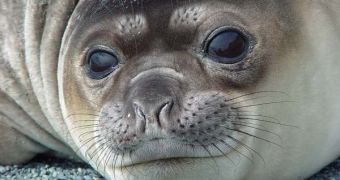New biological research revealed the fact that elephant seals have an innate ability to store oxygen inside their muscles, which practically makes them walking and breathing scuba diving tanks. A myoglobin complex is responsible for their performances, as the proteins it's made of can hold up to as much as 20 times more oxygen than human myoglobin cells. This translates into the fact that elephant seals can swim completely submerged for up to 80 minutes. Furthermore, they can also stop breathing when sleeping, for periods of about 20 minutes.
Researchers studying them say that their metabolic rates decrease considerably when they are asleep and that blood flows slow down significantly. Biologists assume that this is a built-in measure, aimed at preserving as much heat and energy as possible in the harsh, cold environment seals inhabit. Considering that they are also covered with a thick layer of fat, it's safe to assume that they experience very little of the extremely low temperature around.
Thus far, the mechanisms that allowed the elephant seals to preserve their oxygen inside their bodies remained a mystery to biologists. But recent investigations done by Thomas Jue, at the University of California, suggest that, once asleep, the surplus myoglobin cells in the blood deliver their payload to the cells that need them until the animal resumes the breathing process. If the oxygen in the myoglobin runs out, the seal wakes up or the automated breathing reflex is triggered unknowingly.
These results could help scientists develop and perfect new ways of underwater explorations. One day, heavy scuba diving costumes and tanks could be replaced with treatments that consist of injecting large quantities of myoglobin proteins directly into the bloodstream. Such advancements are still far away from widespread use, but experimenting with this technique could provide researchers with much needed insights into the way these proteins bind and then release oxygen.

 14 DAY TRIAL //
14 DAY TRIAL //